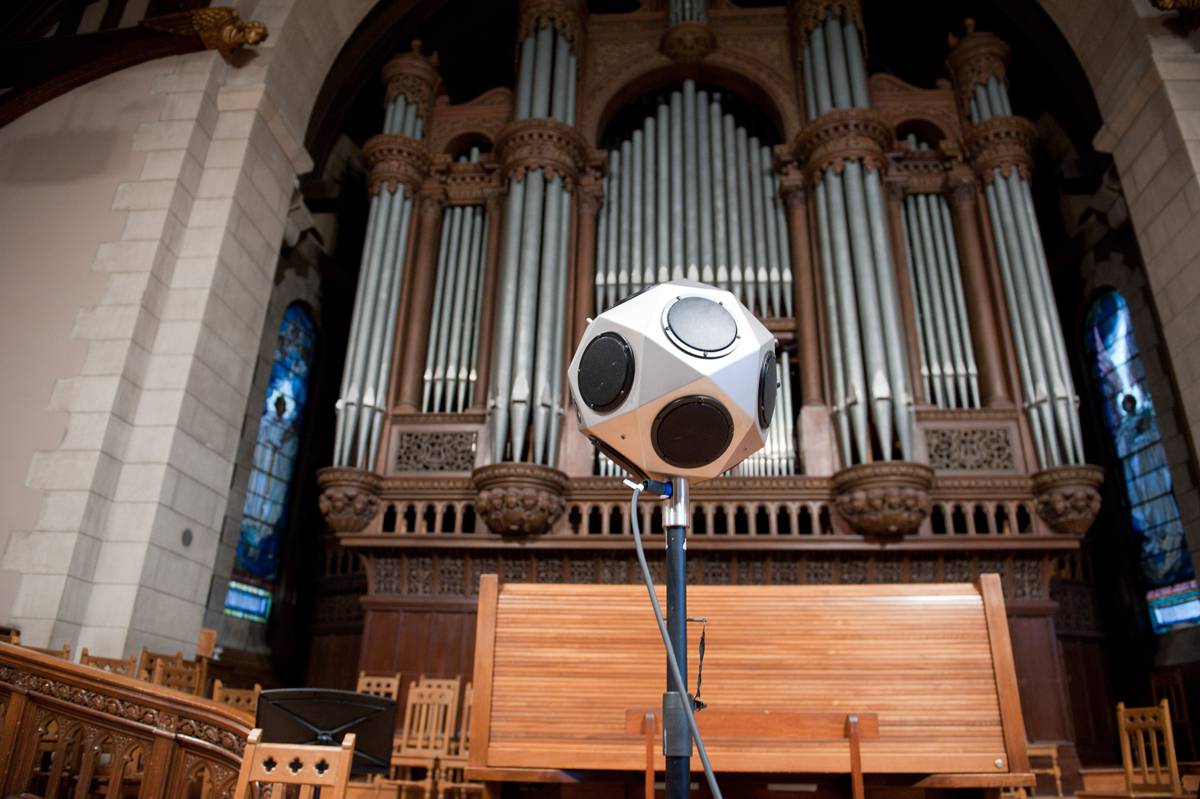Creative Arts Across DisciplinesA Movable ConcertThe Sound of Space
Creative Arts Across DisciplinesA Movable ConcertThe Sound of Space
Over an hour-and-a-half period, the Choir and an audience of nearly 100 people moved to six venues on campus, exploring the acoustics of each space.
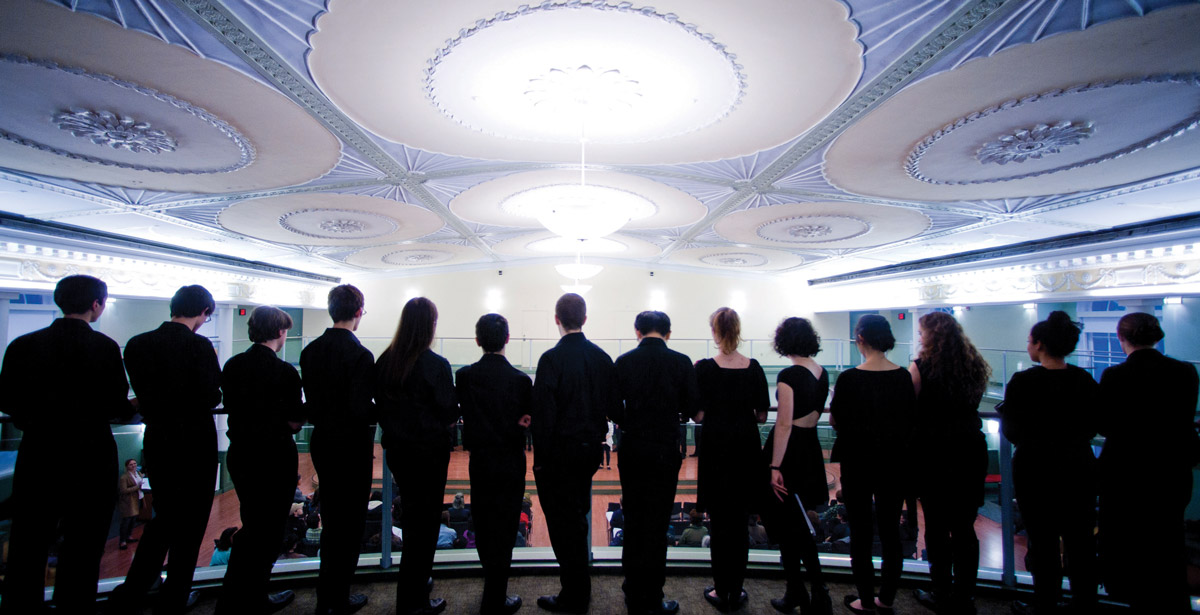
The concert began in the Chapel, the setting for hundreds of Vassar’s musical performances since it opened in 1904. Under the direction of Associate Professor of Music Christine Howlett (also director of choral activities), the Vassar College Choir sang a kyrie, Missa O quam gloriosum, by 16th-century composer Tomás Luis de Victoria, from the Chapel balcony.
Soon after the final note had reverberated throughout the majestic Romanesque Revival building, it became clear this would be no ordinary concert. The choir left the balcony, reassembled in two groups on either side of the altar, and performed the kyrie again. The audience was then instructed to leave the Chapel and reassemble in the foyer of the Frances Lehman Loeb Art Center, where the choir sang a portion of Eric Whitacre’s Leonardo Dreams of His Flying Machine.
Over the next hour and a half, the choir and an audience of nearly 100 people moved to five other venues on campus—the second-floor auditorium of the Students’ Building (known to many as the UpC) and four spaces in Kenyon Hall, including the volleyball court and the squash courts, where Howlett said she is pretty sure no musical performance had ever been held before.
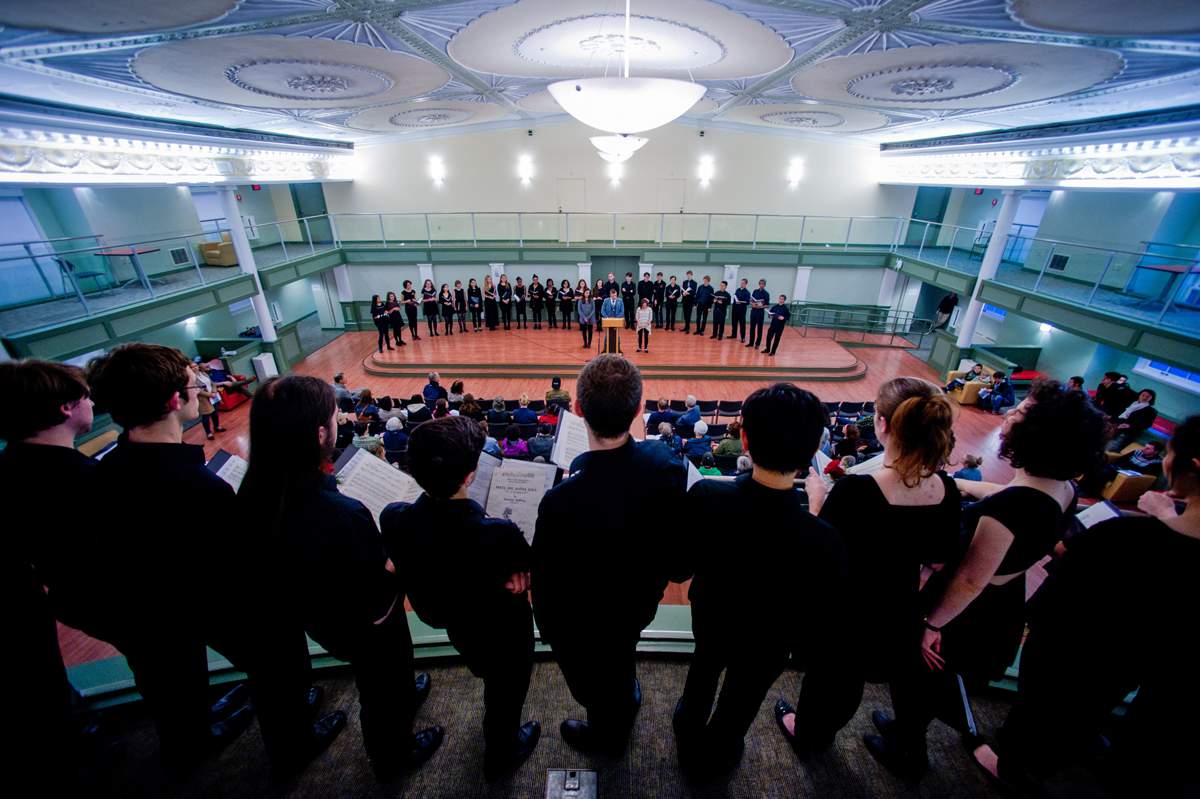
The music for each venue was chosen to demonstrate the acoustical features of the space, and students enrolled in Physics 125: The Sound of Space explained to the audience why the music sounded different in each of the different spaces.
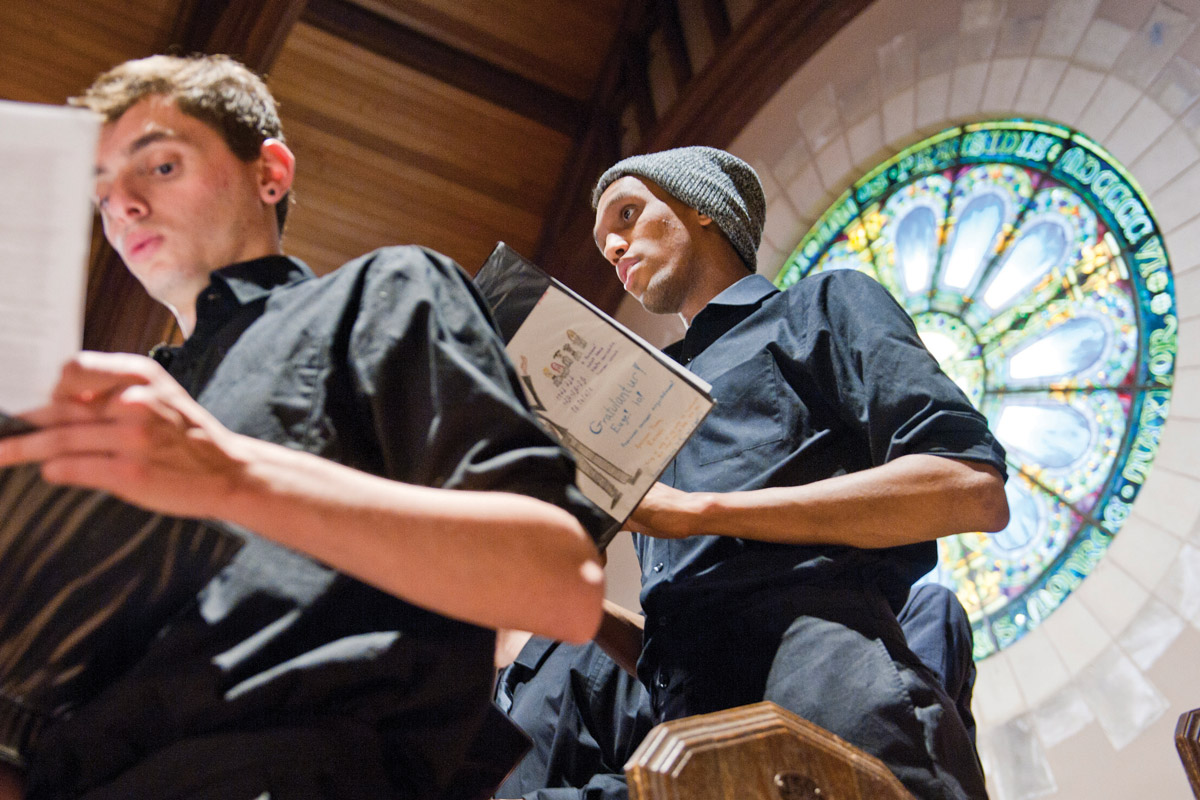
In the Chapel, they noted, the music was highly reverberant when the choir sang in the balcony because the sound waves had a long way to travel and bounced off the hard wooden surfaces of the ceiling and walls. The same piece of music sounded more “intimate” when the singers were tucked in close to the front of the room.
In many of the venues, the music sounded fuller or more restrained depending on where audience members were standing because the surfaces were different in various parts of the room. The most muffled sounds of all were heard in the last stop of the traveling concert, the Frances Daly Fergusson Dance Theater in Kenyon Hall, where the high ceiling and large cloth curtain on the stage absorbed many of the sound waves. This prompted Associate Professor of Physics David Bradley and Associate Professor of Art Andrew Tallon to rig up an artificial sound system to make the music sound much bigger.
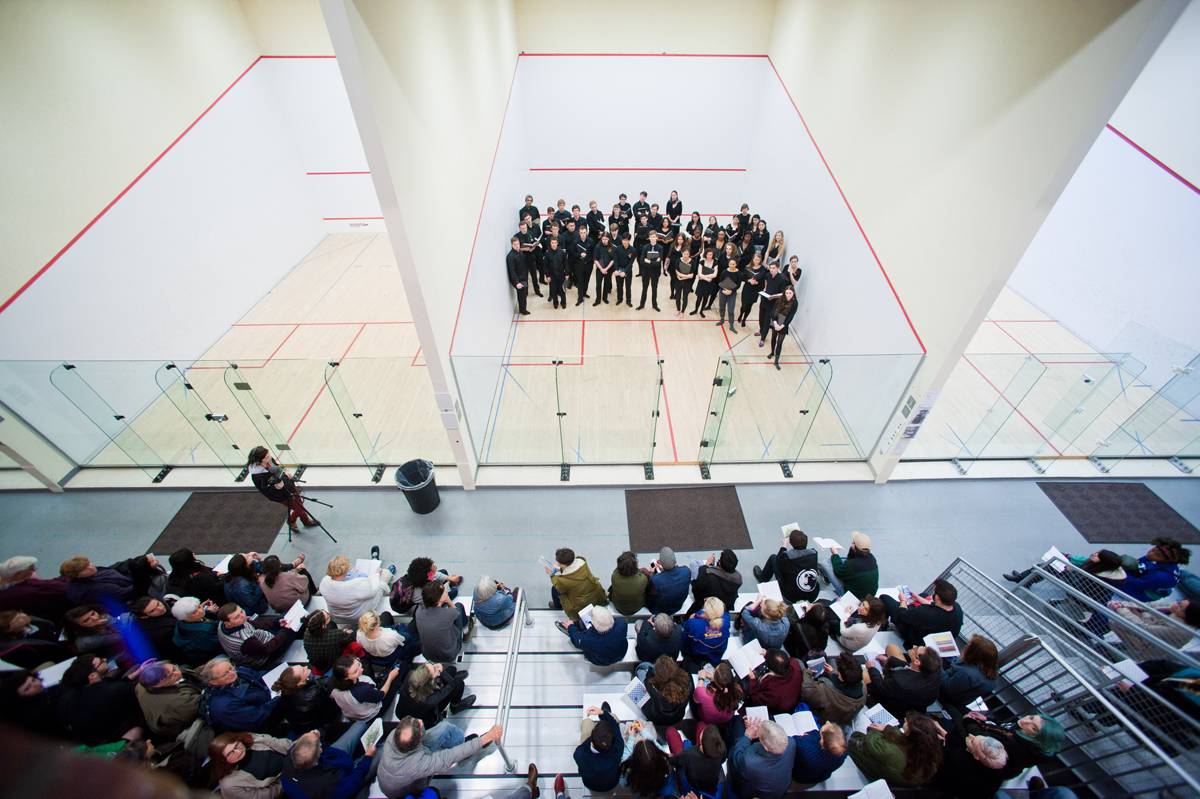
The idea for this unique traveling show, held toward the end of the spring semester, was hatched two years ago in a series of conversations between Associate Professor of Physics David Bradley, whose field of study is acoustics, and Associate Professor of Art Andrew Tallon, whose groundbreaking studies of the architecture and acoustics of cathedrals in North America and Europe have gained worldwide acclaim.
Bradley said he and Tallon had been talking about co-teaching a course on acoustics since they both arrived on campus seven years ago. But the idea really began to take shape when they learned that the collaborative teaching and learning program Creative Arts Across Disciplines (CAAD) was looking for proposals. Howlett also mentioned she had been thinking of creating a multidisciplinary course on sound under the auspices of the program. Over the next several months, the trio laid the groundwork for Physics 125.
“After a lot of work, what we created had a lot of synergy; it was a ‘super-Vassar’ course. Also typical of Vassar, we received support from a lot of other people on campus. This was a one-of-a-kind experiment, and it took CAAD to bring it together.”
“It started as a vague idea about acoustics and sound and architecture, but we had no idea how we were going to do it,” Bradley says. “After a lot of work, what we created had a lot of synergy; it was a ‘super-Vassar’ course. Also typical of Vassar, we received support from a lot of other people on campus. This was a one-of-a-kind experiment, and it took CAAD to bring it together.”
“This might be the most Vassarian project I’ve ever been involved in,” Tallon says. He credits much of the success of the course to the close relationship the three instructors had before they began. “It worked because we all have overlapping specialties. I have a background in music, and David has a background in architecture,” he says. “Plus, we all just really get along, and that’s important in any collaborative venture.”
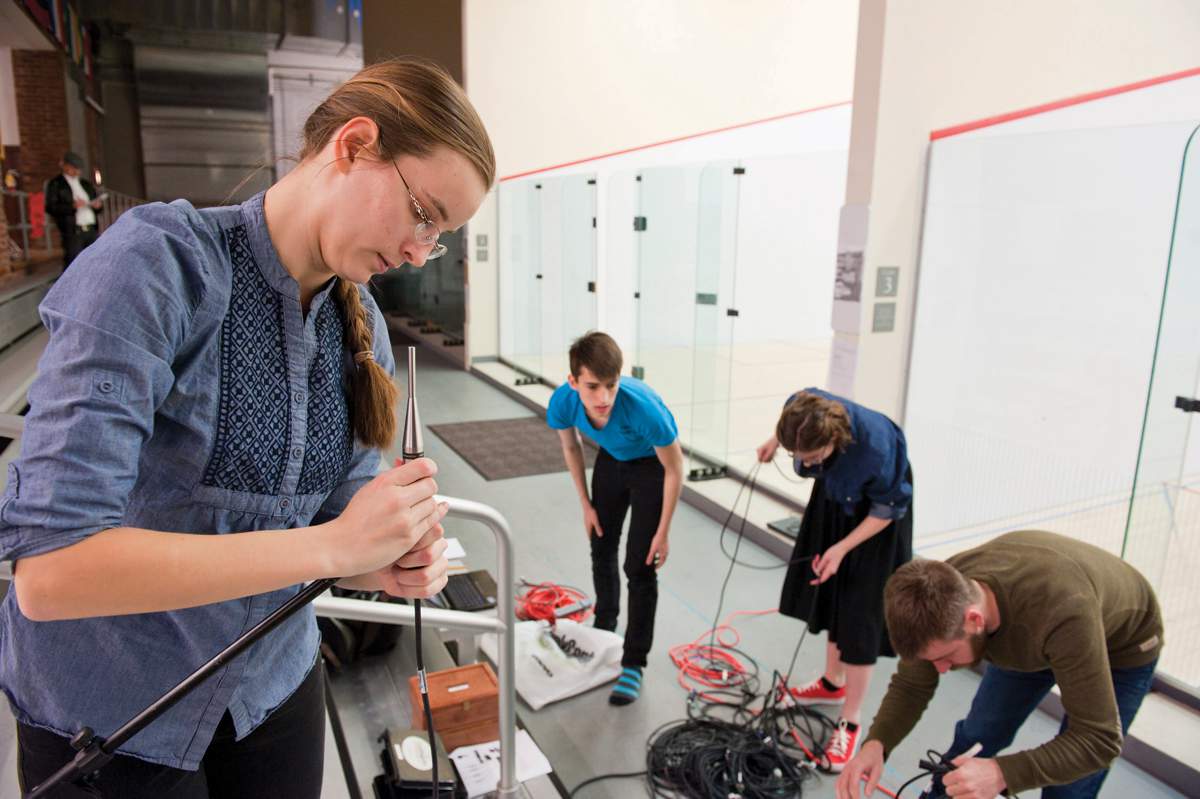
Tallon, Bradley, and Howlett all gave lectures on their areas of expertise, but the three also collaborated in teaching many of the classes, and the students did some hands-on learning.
Working in groups of three during the second half of the semester, the students used Bradley’s acoustics equipment and software to track the path of sound waves in all seven concert venues. They placed microphones and a device called an omnidirectional speaker in various locations in each venue and determined how the sound traveled and reverberated through the space. The students explained the results of those tests in introductory remarks before each mini-concert.
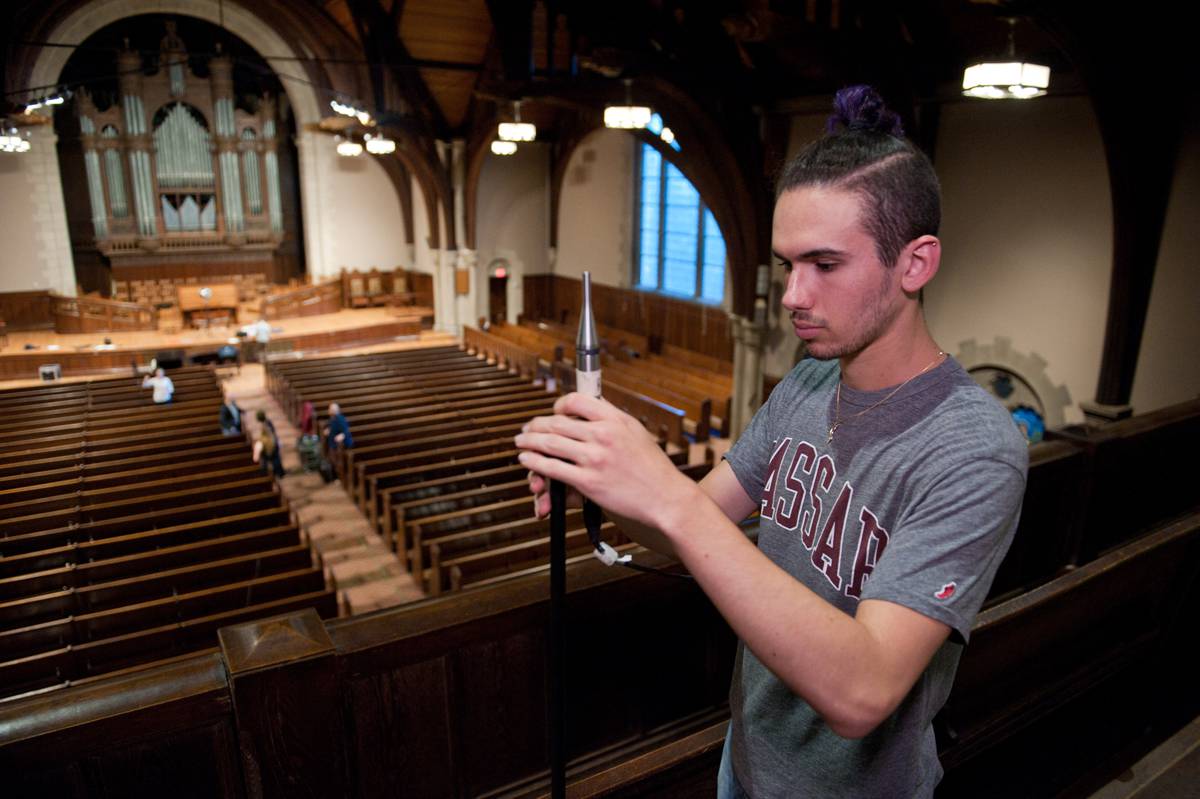
Tallon says he appreciated the eclectic mix of students who signed up for the course. They were from all four class years and had majors ranging from math and physics to English, history, and drama.
Like most of the 21 students in the class, Joseph Szymanski ’17, a drama major from Franklin Square, NY, had little background in physics when he enrolled in Physics 125. But he says the course’s unique format, culminating in the movable concert, provided him and his fellow students with a gratifying educational experience. “Something like this had never been done at Vassar before, and we were all excited about how it turned out,” he says. “I’m absolutely planning to take another CAAD course next year.”
Sarah Johnson ’16, a double major in music and medieval and Renaissance studies, from Garland, ME, viewed the course from a different perspective. She was the only student in the class who also sang in the choir. “I appreciated the class especially because I am learning to conduct, and currently conduct the Vassar Camerata Choir,” Johnson says. “This course enabled me to think about the placement of my singers and how I could use the spaces to enhance their voices.”
Tom Pacio, the CAAD coordinator, says, “The payoff for me was watching this holistic approach to teaching and learning that is completely in line with Vassar’s philosophy.”
He admits that he also felt inspired by the choice of venues for the performance. “We should do more concerts in the squash courts,” he says.
